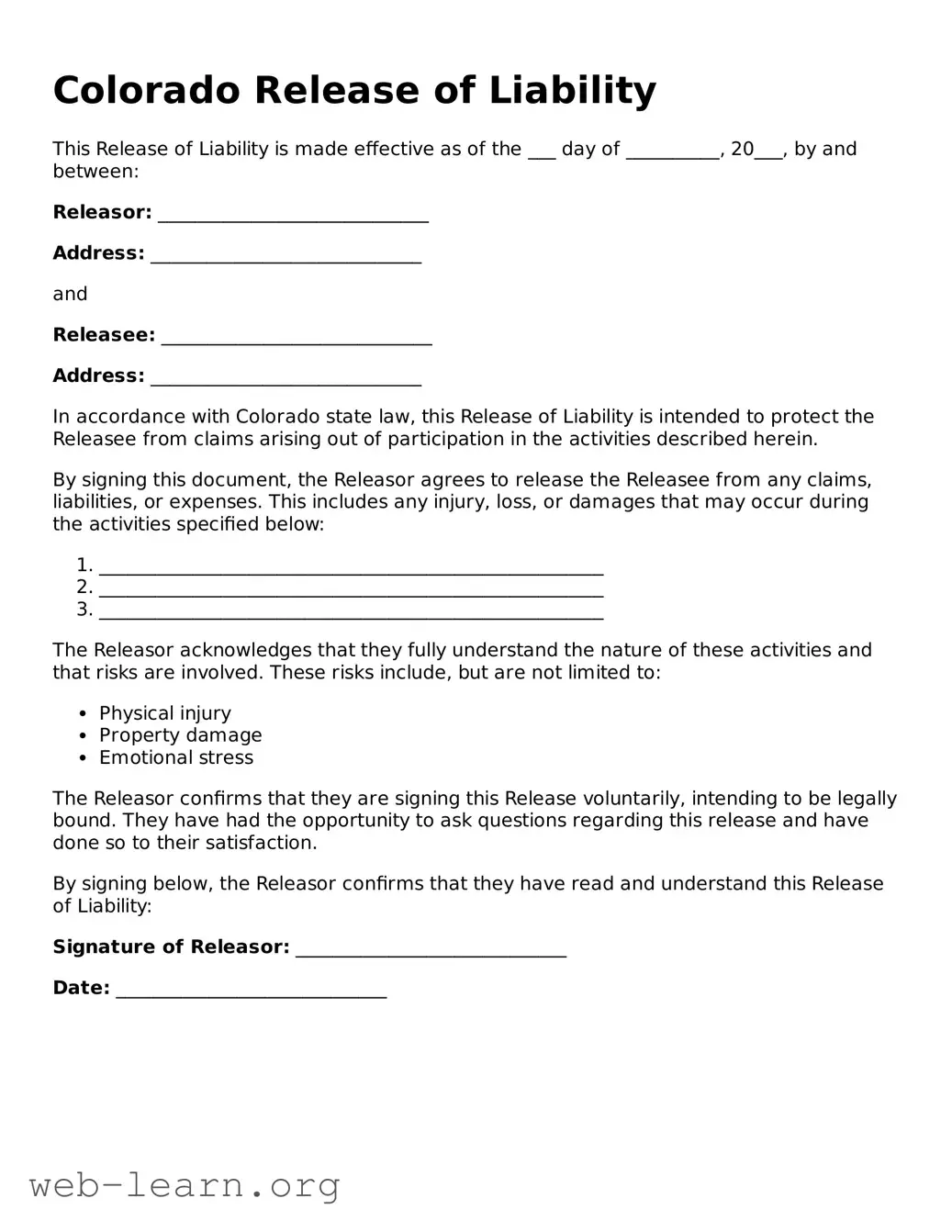Colorado Release of Liability
This Release of Liability is made effective as of the ___ day of __________, 20___, by and between:
Releasor: _____________________________
Address: _____________________________
and
Releasee: _____________________________
Address: _____________________________
In accordance with Colorado state law, this Release of Liability is intended to protect the Releasee from claims arising out of participation in the activities described herein.
By signing this document, the Releasor agrees to release the Releasee from any claims, liabilities, or expenses. This includes any injury, loss, or damages that may occur during the activities specified below:
- ______________________________________________________
- ______________________________________________________
- ______________________________________________________
The Releasor acknowledges that they fully understand the nature of these activities and that risks are involved. These risks include, but are not limited to:
- Physical injury
- Property damage
- Emotional stress
The Releasor confirms that they are signing this Release voluntarily, intending to be legally bound. They have had the opportunity to ask questions regarding this release and have done so to their satisfaction.
By signing below, the Releasor confirms that they have read and understand this Release of Liability:
Signature of Releasor: _____________________________
Date: _____________________________
